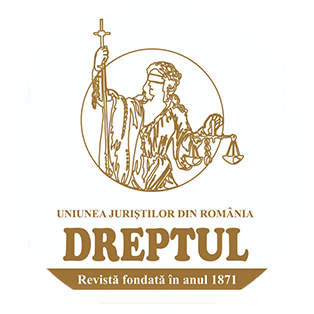-
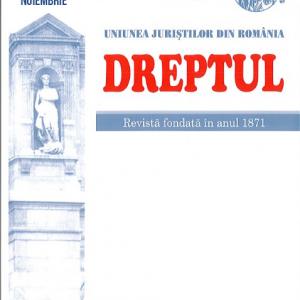 This study subjects to our attention brief critical reflections on the provisions of the new Civil Code in matters of seizin. Appeared as an institution that had served the transmission of the property right from the deceased to his legal heirs, evolving as an institution that had served the possession of property in the inheritance, the seizin was taken over by the Romanian Civil Code of 1864 in a truncated manner from the French Civil Code, which gave rise to a confusing legal regime, constantly criticized in the doctrine in point of content, effects and scope of application thereof. Although the Romanian legislator had the opportunity to complete the field of application and to define by law the notion of seizin by the reform of the civil law occurred in 2011, it has regulated the seizin so that, at least for reasons of terminology, the author considers that the legal texts are still open for improvement, being susceptible of non-application or generating confusions in the current wording.
This study subjects to our attention brief critical reflections on the provisions of the new Civil Code in matters of seizin. Appeared as an institution that had served the transmission of the property right from the deceased to his legal heirs, evolving as an institution that had served the possession of property in the inheritance, the seizin was taken over by the Romanian Civil Code of 1864 in a truncated manner from the French Civil Code, which gave rise to a confusing legal regime, constantly criticized in the doctrine in point of content, effects and scope of application thereof. Although the Romanian legislator had the opportunity to complete the field of application and to define by law the notion of seizin by the reform of the civil law occurred in 2011, it has regulated the seizin so that, at least for reasons of terminology, the author considers that the legal texts are still open for improvement, being susceptible of non-application or generating confusions in the current wording. -
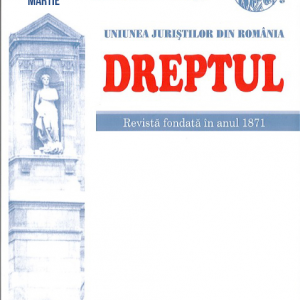 The author strongly criticizes the regulation stated in art. 519 to 521 of the new (Romanian) Code of Civil Procedure (referral to the High Court of Cassation and Justice for a prior ruling for dispensation of law issues), considering, reasoned, that these texts should be expressly repealed so that, also in the case covered by art. 519, an appeal in the interest of law can be filed (Articles 514 to 518 of the same code).
The author strongly criticizes the regulation stated in art. 519 to 521 of the new (Romanian) Code of Civil Procedure (referral to the High Court of Cassation and Justice for a prior ruling for dispensation of law issues), considering, reasoned, that these texts should be expressly repealed so that, also in the case covered by art. 519, an appeal in the interest of law can be filed (Articles 514 to 518 of the same code). -
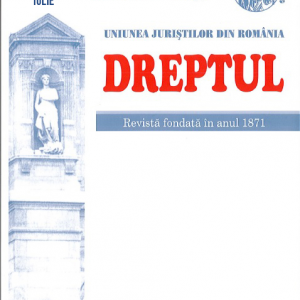 This study analyzes the regulations pertaining to causes of revocation of donations, regulations which entered into force at the same time with the implementation of Law No 287/2009 on the new Civil Code. The starting point of this paper is the fact that donations and liberalities have been under the influence of special legal regimes, different from those of onerous legal documents. Even though donations are, in principle, irrevocable legal acts, the legislator has instituted special cases of revocation thereof, in order to avoid or limit prodigality acts and undesired effects on the interests of the donor or of the persons close to this donor. It was particularly on these causes of revocation of donations that the author focused his scientific endeavour, by analyzing doctrine and case-law and by formulating his own opinions and de lege ferenda proposals, so that legal rules in the examined area be harmonized with the public order interests. The study also relates to the new criminal regulations (the new Criminal Code) as regards the criminal acts of revocation of donations for ingratitude.
This study analyzes the regulations pertaining to causes of revocation of donations, regulations which entered into force at the same time with the implementation of Law No 287/2009 on the new Civil Code. The starting point of this paper is the fact that donations and liberalities have been under the influence of special legal regimes, different from those of onerous legal documents. Even though donations are, in principle, irrevocable legal acts, the legislator has instituted special cases of revocation thereof, in order to avoid or limit prodigality acts and undesired effects on the interests of the donor or of the persons close to this donor. It was particularly on these causes of revocation of donations that the author focused his scientific endeavour, by analyzing doctrine and case-law and by formulating his own opinions and de lege ferenda proposals, so that legal rules in the examined area be harmonized with the public order interests. The study also relates to the new criminal regulations (the new Criminal Code) as regards the criminal acts of revocation of donations for ingratitude. -
 Analiza problematicii invocate în titlu vizează atât considerentele, cât, mai ales, dispozitivul Deciziei Înaltei Curți de Casație și Justiție nr. 52/20181, pronunțată de instanța supremă în complet constituit pentru dezlegarea unor chestiuni de drept și care vizează interpretarea și aplicarea dispozițiilor art. 27 din Codul de procedură civilă. În concret, Înalta Curte a statuat următoarele: „În interpretarea și aplicarea dispozițiilor art. 27 C.pr.civ., cu referire la articolul 147 alin. (4) din Constituția României, efectele Deciziei Curții Constituționale nr. 369 din 30 mai 2017 se produc cu privire la hotărârile judecătorești pronunțate după publicarea acesteia în Monitorul Oficial al României, în litigiile evaluabile în bani de până la 1.000.000 lei inclusiv, pornite ulterior publicării Deciziei (20 iulie 2017)”.
Analiza problematicii invocate în titlu vizează atât considerentele, cât, mai ales, dispozitivul Deciziei Înaltei Curți de Casație și Justiție nr. 52/20181, pronunțată de instanța supremă în complet constituit pentru dezlegarea unor chestiuni de drept și care vizează interpretarea și aplicarea dispozițiilor art. 27 din Codul de procedură civilă. În concret, Înalta Curte a statuat următoarele: „În interpretarea și aplicarea dispozițiilor art. 27 C.pr.civ., cu referire la articolul 147 alin. (4) din Constituția României, efectele Deciziei Curții Constituționale nr. 369 din 30 mai 2017 se produc cu privire la hotărârile judecătorești pronunțate după publicarea acesteia în Monitorul Oficial al României, în litigiile evaluabile în bani de până la 1.000.000 lei inclusiv, pornite ulterior publicării Deciziei (20 iulie 2017)”. -
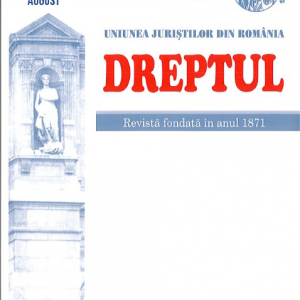 In this study, the author comments on a Resolution passed in 2010 by the High Court of Cassation and Justice (Joint Sections), issued following an appeal promoted in the interest of the law and argues that, in contravention law, the principle of nulla poena sine lege is fully justified, both in general, and when the alternative sentencing for the main penalty of fine is performing community service.
In this study, the author comments on a Resolution passed in 2010 by the High Court of Cassation and Justice (Joint Sections), issued following an appeal promoted in the interest of the law and argues that, in contravention law, the principle of nulla poena sine lege is fully justified, both in general, and when the alternative sentencing for the main penalty of fine is performing community service. -
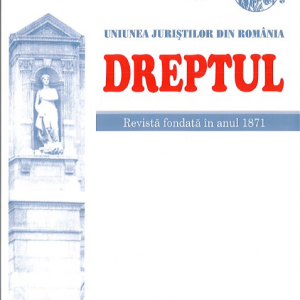 Lately, within the penal lawsuit – in the stage of its prosecution and judgment – due to the impasse of producing evidence facing the prosecution, since the prosecutor issues solutions for not initiating the penal prosecution without factual or legal grounds, with regard to the delator that perpetrated deeds provided by the penal law and closely connected with the crimes for which they ordered the judgment of others, they heard and then obtained that such delators be heard as witnesses and grounded its accusation on their testimonies. The clarification of the capacity in which a delator may be heard within a penal lawsuit appears, therefore, necessary both from a theoretical point of view, and from a practical point of view, and the authors’ approach is trying to respond to this necessity.
Lately, within the penal lawsuit – in the stage of its prosecution and judgment – due to the impasse of producing evidence facing the prosecution, since the prosecutor issues solutions for not initiating the penal prosecution without factual or legal grounds, with regard to the delator that perpetrated deeds provided by the penal law and closely connected with the crimes for which they ordered the judgment of others, they heard and then obtained that such delators be heard as witnesses and grounded its accusation on their testimonies. The clarification of the capacity in which a delator may be heard within a penal lawsuit appears, therefore, necessary both from a theoretical point of view, and from a practical point of view, and the authors’ approach is trying to respond to this necessity. -
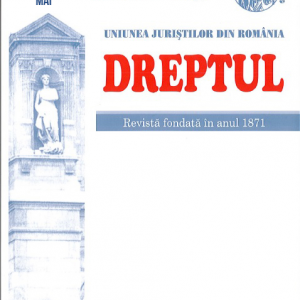 Government Emergency Ordinance No. 71/2009, serially amended and supplemented by Government Emergency Ordinances Nos. 18/2010 and 45/2010 established that Court decisions that became enforceable until December 31, 2009 and that concern salary rights to the benefit of the personnel from the budgetary sector shall be paid by budgetary authorities and institutions as follows: 34% in 2012; 33% in 2013; 33% in 2014, of the value of the enforceable title. The author considers that Government Emergency Ordinance No. 71/2009 (as amended and supplemented) does not infringe Protocol No. 1 to the European Convention on Human Rights and Fundamental Freedoms, as well as the applicable jurisprudence of the European Court of Human Rights.
Government Emergency Ordinance No. 71/2009, serially amended and supplemented by Government Emergency Ordinances Nos. 18/2010 and 45/2010 established that Court decisions that became enforceable until December 31, 2009 and that concern salary rights to the benefit of the personnel from the budgetary sector shall be paid by budgetary authorities and institutions as follows: 34% in 2012; 33% in 2013; 33% in 2014, of the value of the enforceable title. The author considers that Government Emergency Ordinance No. 71/2009 (as amended and supplemented) does not infringe Protocol No. 1 to the European Convention on Human Rights and Fundamental Freedoms, as well as the applicable jurisprudence of the European Court of Human Rights. -
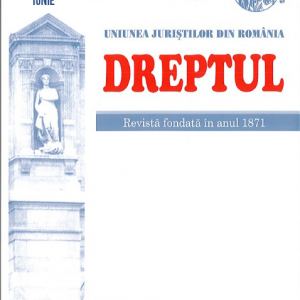 In this study there are analyzed, in particular: – The influence of the European Court of Human Rights on the international movement of foreign judgments; – The enforcement of foreign judgments according to the new Romanian Civil Procedure Code; – The enforcement of judgments pronounced in a Member State of the European Union.
In this study there are analyzed, in particular: – The influence of the European Court of Human Rights on the international movement of foreign judgments; – The enforcement of foreign judgments according to the new Romanian Civil Procedure Code; – The enforcement of judgments pronounced in a Member State of the European Union. -
 How firm the authority of the state should be and how wide the margin of freedom of the citizens of a state should be are questions without a convenient answer for either the state, or for the citizen. This is a truth that can be insisted upon for a long time, but without satisfactory results. The citizen has always demanded from the public power a sphere of his freedom as wide as possible and the public power has been and is, in principle, ready to retain an extra authority over the citizen. The author aims in this study to show that both the authority of the state and the vocation of freedom of the citizen must slide between reasonable and legitimate limits, so that the state can exercise its role and social functions established through constitutional norm and put in the service of the common good of the society and that the citizen can enjoy, without any illegitimate restraints or restrictions, a freedom (recognized and guaranteed by the state), which allows him to develop his personality and dignity as a human being, in the general interpersonal relations and in its relations with the state, in a determined social-historical, economic, political, cultural, religious context, etc. The author also shows that the relationship between authority and freedom is in its essence a fragile one, in which the state may have, in certain political circumstances or of other nature, leviathan temptations, with oppressive effects on the constitutional freedoms, a position from which it reproduces tools of force in ever new forms and it restricts the exercise of the citizens’ rights. The author draws attention to a serious social danger that threatens the foundations of a democratic government: the excess of authority and its repeated, illegitimate and unjustified use can be premises of the establishment of an authoritarian regime, in front of which the citizen is powerless. The excess of authority and the unlawful violation of public liberties call into question the democratic character of the state. In its turn and also in certain given political or social circumstances, the associated citizen or citizens may be tempted to resort to extreme forms of manifestation, claiming a higher degree of individual or collective freedom, to the detriment of the original authority of public power.
How firm the authority of the state should be and how wide the margin of freedom of the citizens of a state should be are questions without a convenient answer for either the state, or for the citizen. This is a truth that can be insisted upon for a long time, but without satisfactory results. The citizen has always demanded from the public power a sphere of his freedom as wide as possible and the public power has been and is, in principle, ready to retain an extra authority over the citizen. The author aims in this study to show that both the authority of the state and the vocation of freedom of the citizen must slide between reasonable and legitimate limits, so that the state can exercise its role and social functions established through constitutional norm and put in the service of the common good of the society and that the citizen can enjoy, without any illegitimate restraints or restrictions, a freedom (recognized and guaranteed by the state), which allows him to develop his personality and dignity as a human being, in the general interpersonal relations and in its relations with the state, in a determined social-historical, economic, political, cultural, religious context, etc. The author also shows that the relationship between authority and freedom is in its essence a fragile one, in which the state may have, in certain political circumstances or of other nature, leviathan temptations, with oppressive effects on the constitutional freedoms, a position from which it reproduces tools of force in ever new forms and it restricts the exercise of the citizens’ rights. The author draws attention to a serious social danger that threatens the foundations of a democratic government: the excess of authority and its repeated, illegitimate and unjustified use can be premises of the establishment of an authoritarian regime, in front of which the citizen is powerless. The excess of authority and the unlawful violation of public liberties call into question the democratic character of the state. In its turn and also in certain given political or social circumstances, the associated citizen or citizens may be tempted to resort to extreme forms of manifestation, claiming a higher degree of individual or collective freedom, to the detriment of the original authority of public power. -
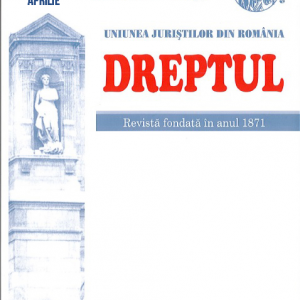 The entry into force since January 1st 2011 of the Framework Law no. 284/2010 on uniform remuneration of staff paid from public funds and of Law no. 285/2010 on remuneration in 2011 of staff paid from public funds brings again to the fore the thorny issue of staff remuneration in the public sector. Fructifying the experience gained in 2010 through the implementation of the Framework Law no. 330/2009, now repealed, the aforesaid enactments regulate principles on remuneration, pay system, base rates’ setting and differentiation (pays, wages in terms of position and monthly allowances according to employment), benefits, bonuses, allowances, compensations and premiums that the public sector staff shall capitalize on, as well as legal liability and proceedings in disputes’ settlement. In this context, essential are also milestones set by the Constitutional Court via resolutions passed on issues of principle on the possible intervention by the legislator in matters of staff remuneration in the public sector.
The entry into force since January 1st 2011 of the Framework Law no. 284/2010 on uniform remuneration of staff paid from public funds and of Law no. 285/2010 on remuneration in 2011 of staff paid from public funds brings again to the fore the thorny issue of staff remuneration in the public sector. Fructifying the experience gained in 2010 through the implementation of the Framework Law no. 330/2009, now repealed, the aforesaid enactments regulate principles on remuneration, pay system, base rates’ setting and differentiation (pays, wages in terms of position and monthly allowances according to employment), benefits, bonuses, allowances, compensations and premiums that the public sector staff shall capitalize on, as well as legal liability and proceedings in disputes’ settlement. In this context, essential are also milestones set by the Constitutional Court via resolutions passed on issues of principle on the possible intervention by the legislator in matters of staff remuneration in the public sector. -
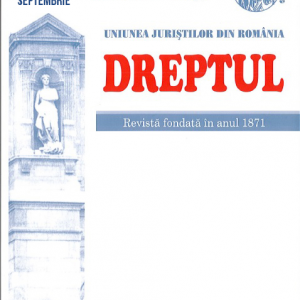 Dignity of human being is one of the most obvious and complex notions which lawyers had to study thoroughly in the last years. The complexity of dignity arises from its almost non-legal nature: dignity is a fundamental attribute of the human being or a postulate of civilization of which law should take note. It can not be conceived that dignity can be denied or that legal order ignore it. As an expression of human value, dignity tends to be confused with the notion of humanity. The presence of a principle of dignity in our legal order is undeniable; but respect for a person’s dignity can also reveal itself as a subjective right, as shown in Article 72 (1) of the Civil Code. Having in view the uncertainties arisen in the debates around dignity, the authors’ approach is an attempt to reflect, on the one hand, on the conceptual notion of dignity by the analysis of the object and of the legal nature of dignity and, on the other hand, on the functional point of view which allows to determine what dignity serves for; in other words, the functions of dignity and its practical applications. The regulation of the right to dignity in the Civil Code should be regarded as a timely novelty.
Dignity of human being is one of the most obvious and complex notions which lawyers had to study thoroughly in the last years. The complexity of dignity arises from its almost non-legal nature: dignity is a fundamental attribute of the human being or a postulate of civilization of which law should take note. It can not be conceived that dignity can be denied or that legal order ignore it. As an expression of human value, dignity tends to be confused with the notion of humanity. The presence of a principle of dignity in our legal order is undeniable; but respect for a person’s dignity can also reveal itself as a subjective right, as shown in Article 72 (1) of the Civil Code. Having in view the uncertainties arisen in the debates around dignity, the authors’ approach is an attempt to reflect, on the one hand, on the conceptual notion of dignity by the analysis of the object and of the legal nature of dignity and, on the other hand, on the functional point of view which allows to determine what dignity serves for; in other words, the functions of dignity and its practical applications. The regulation of the right to dignity in the Civil Code should be regarded as a timely novelty. -
 What seems relevant to this study highlight is the current trend of Europeanization guarantees the right to a fair trial in civil matters established by art. 6, paragraph 1 of the Convention for the Protection of Human Rights and Fundamental Freedoms and relativization constitutional provisions to guarantee this right, from the perspective of European Court of Human Rights. With this approach, the study proposed open a complex and complete vision, but not exhaustive approach guarantees within the current right to a fair trial in civil matters. Following an outline Key – are analyzed successively three major parts of the study, namely, 1. Identification of universal standards and regulations contained in the European human rights and, of Romanian constitutional and legal regulations on the right to a fair trial in civil matters. 2. Doctrinal guidelines on the requirements of the right to a fair trial in civil matters. 3. Jurisprudential guidelines on the requirements of the right to a fair trial in civil matters.
What seems relevant to this study highlight is the current trend of Europeanization guarantees the right to a fair trial in civil matters established by art. 6, paragraph 1 of the Convention for the Protection of Human Rights and Fundamental Freedoms and relativization constitutional provisions to guarantee this right, from the perspective of European Court of Human Rights. With this approach, the study proposed open a complex and complete vision, but not exhaustive approach guarantees within the current right to a fair trial in civil matters. Following an outline Key – are analyzed successively three major parts of the study, namely, 1. Identification of universal standards and regulations contained in the European human rights and, of Romanian constitutional and legal regulations on the right to a fair trial in civil matters. 2. Doctrinal guidelines on the requirements of the right to a fair trial in civil matters. 3. Jurisprudential guidelines on the requirements of the right to a fair trial in civil matters.
